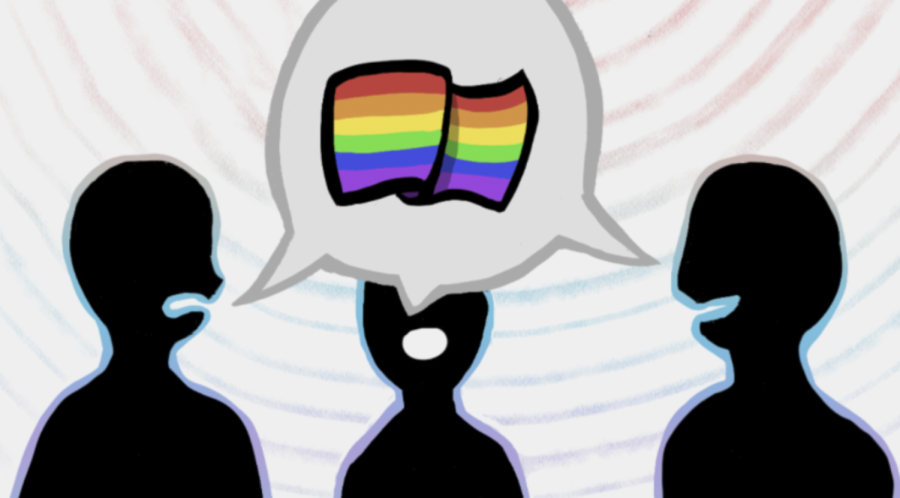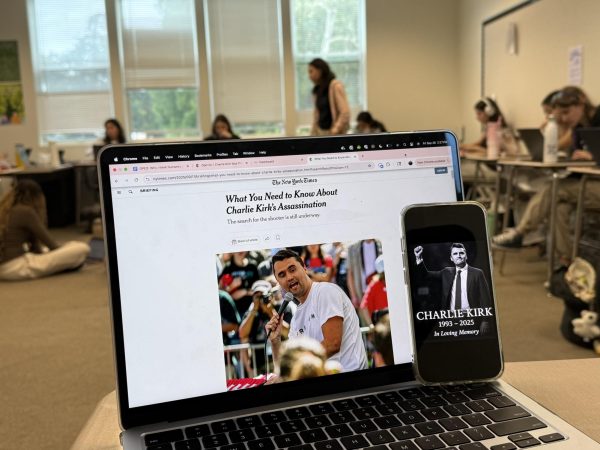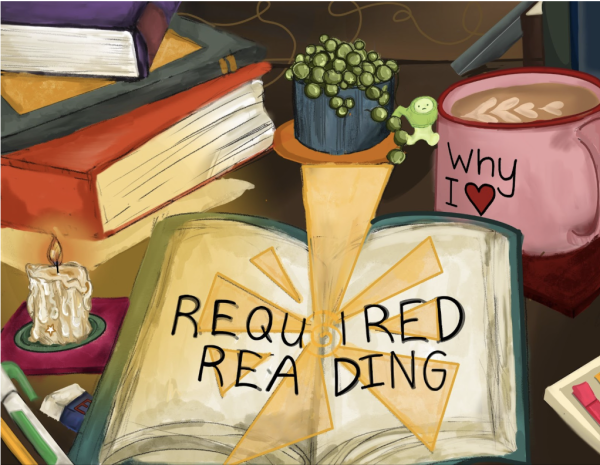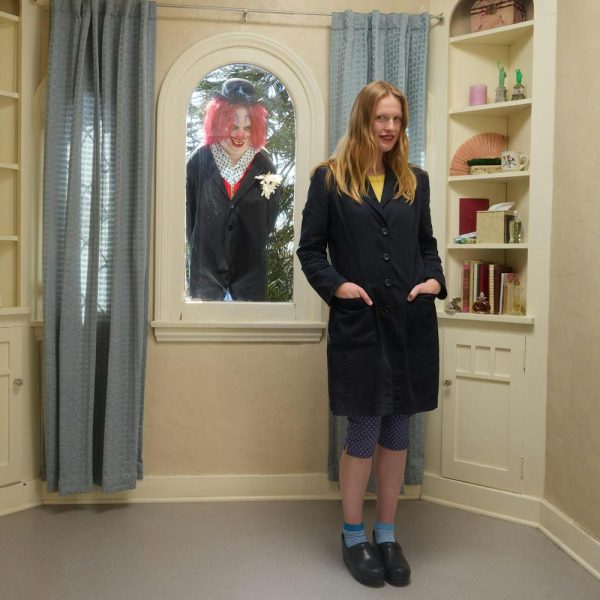Florida’s Don’t Say Gay Bill Isn’t About Protecting Kids. It’s Blatant Homophobia
On March 28th, Florida’s governor Ron DeSantis signed the Parental Rights in Education Bill into law. The new law “prohibits classroom discussion about sexual orientation or gender identity in certain grade levels,” leading many of its opponents to call it the “Don’t Say Gay” law.
As a queer student, my heart sank when I first read about the bill through a somewhat dumbed-down Instagram post. Even though I live in California, a state where a bill like this would never pass, a state over two thousand miles away from Florida, a state where I’d never felt unsafe because of my sexual orientation, I was filled with immediate panic. How could this happen? How could this gain traction? Who in the world could support this?
Because of the vague language of the law, some conservatives argue that the “Don’t Say Gay” law is not an attack on queer people, but rather a way for parents to control the content their children have access to in school. The wording never directly states queer or LGBTQ+, just “sexual orientation and gender identity.” Despite this, I see this as an obvious act of homophobia because the law plans to minimize or outright ignore LGBTQ+ topics in classrooms.
What scares me most about the “Don’t Say Gay” law is that prevents a fuller discussion of sexuality and gender identity in a culture where LGBTQ+ issues are already lacking in representation. The bill essentially legalizes the silencing of LGBTQ+ identities, contributions, histories, and issues, further driving them into the shadows, which is where it has already been.
In 1993, Bill Clinton signed the Defense Directive 1304.26, nicknamed the “Don’t Ask Don’t Tell” policy, which allowed LGBTQ+ people to serve in the military as long as they didn’t discuss their sexual orientation. Additionally, even the culture of LGBTQ+ people having to “come out of the closet” assumes that people with queer or trans identities are hiding in isolation and shame.
In my experience, even at Westridge, LGBTQ+ history is somewhat taboo and not discussed unless presented by a student. And if it is, it’s rarely further examined. Izzy C. ’23, a queer student, states, “There’s a lot of queer readings of text that get dismissed as queer kids just wanting to see themselves. It gets trivialized. But in reality, it’s a very legitimate mode of analysis.”
Others at Westridge feel similarly. “[Teachers] just don’t really talk about [LGBTQ+ topics], and I feel like we should talk about it more. They’re not doing anything explicitly wrong, but it’s the lack of doing something right that’s the issue,” stated Ada N. ’24, a student who identifies as queer.
Xochitl M. ’22, another queer student, expressed similar disappointment with the lack of LGBTQ+ topics in the curriculum. She shared, “I just wish queer history was more in the history that people are forced to take. There could easily be a bit in U.S. history.”
These experiences at Westridge aren’t unique ones. In a survey conducted by Education Weekly in 2021, 1300 district leaders, school leaders, and teachers were asked several questions including whether or not they believed that their school district should teach specific topics. While race and racism, climate change, sex education, and anti-semitism all had close to 80% of people saying they should be taught, only 57% of people said LGBTQ+ issues should be taught.
Additionally, according to a survey conducted by GLSEN in 2019, “1 in 3 (33%) were taught positive representations of LGBTQ people, history, or events (“inclusive curriculum”). Only 22% reported receiving LGBTQ-inclusive sex education at school.”
I’ve gone back and forth many times on why the statistics look like this. Are teachers uncomfortable or worried about saying the wrong thing? Are these issues not important, only deserving of a five-sentence paragraph in a textbook? Does society believe only LGBTQ+ people need to learn about this, and if so, why do we teach boys about feminism or American kids about European history? I’ll admit I don’t have an answer. These are just the thoughts that come to my head. Additionally, if the statistics look like this now, what will they look like after more of these laws are in place?
Unfortunately, this is not the only law or bill suppressing and withholding resources or care from LGBTQ+ youth, which points to a larger trend within the U.S. right now. Florida’s “Don’t Say Gay” law is just the issue with the most media attention. According to an article published by NPR in April titled Alabama Legislature votes to ban gender-affirming medical care for transgender youth, “The Alabama House of Representatives voted 66-28 for legislation to make it a felony, punishable by up to 10 years in prison, for a doctor to prescribe puberty blockers or hormones or perform surgery to aid in the gender transition of people under age 19. The bill now goes to Republican Gov. Kay Ivey for her signature as Alabama becomes the latest red state to promote legislation and policies aimed at trans youth. Ivey has not indicated whether she will sign it.”
Ohio and Louisiana have also introduced plans for laws that mimic the “Don’t Say Gay” law.
While direct and legal suppression of LGBTQ+ education in kindergarten to third grade seems unharmful on the surface, it makes students coming to terms with their identities feel an inherent wrongness or that there’s something undiscussable about who they are.
As a student who didn’t grow up with a law like the “Don’t Say Gay” law and lives in Los Angeles, a very diverse and welcoming place, I felt and continue to feel awkwardness and even shame around my identity. I used to clear my internet search history after looking up questions about being gay. I identified as questioning at school for about a year although I knew I wasn’t. I still don’t tell people I’m queer unless prompted. I know other students who grew up in the LA area and also struggled to share their full selves without shame and confusion. Still, these struggles are nothing compared to what young people will now encounter in Florida.

Eliza is a senior and the Editor in Chief of Spyglass this year. This is her fifth year on staff and her third year as an editor. Outside of Spyglass,...

Bellamy is a senior and has been in Spyglass Design for two years now. They enjoy Outshine popsicles, music, and discussing Dungeons and Dragons. They...




























![Dr. Zanita Kelly, Director of Lower and Middle School, pictured above, and the rest of Westridge Administration were instrumental to providing Westridge faculty and staff the support they needed after the Eaton fire. "[Teachers] are part of the community," said Dr. Kelly. "Just like our families and students."](https://westridgespyglass.org/wp-content/uploads/2025/03/dr.-kellyyy-1-e1748143600809.png)



























